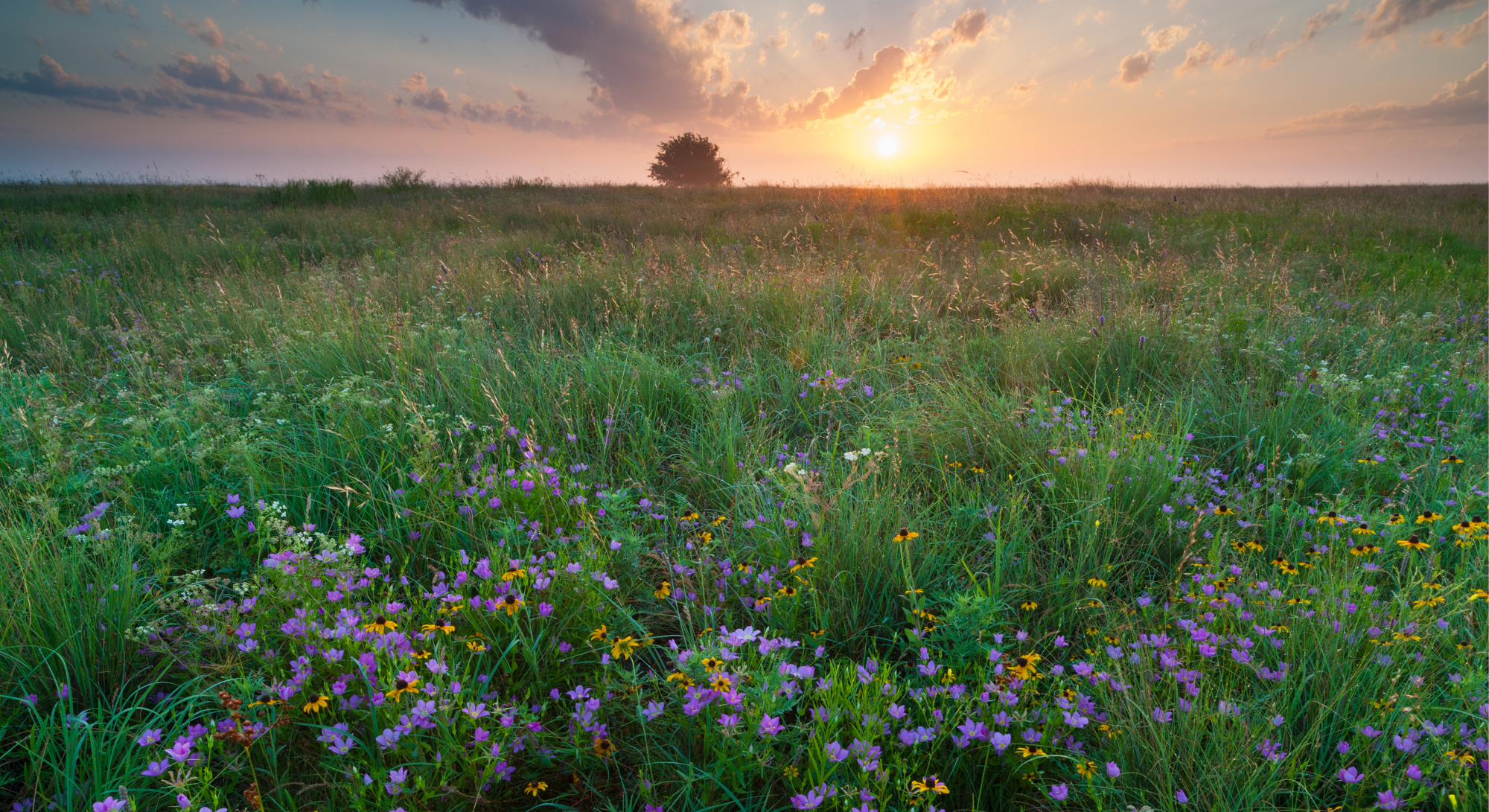THE LOST WORLDS OF MIDWEST ECOSYSTEMS
carrying the flame

17,000 years ago, the land we call Chicago lay under a wall of ice twice as tall as the Sears Tower. As this glacier retreated, it left behind a growing lake of frigid meltwater, bordered by a cold expanse of exposed rock scraped clean of all that existed before. From this new beginning, a mosaic of interwoven habitats arose:
prairies
(grasslands without trees)oak savannas
(grasslands with widely spaced trees)woodlands and forests
(with thicker canopy cover)wetlands
(incl. fens, seeps, bogs & marshes)
These habitats existed for millennia in a state of dynamic flux, providing homes for countless organisms to evolve and flourish. With help from Indigenous burning and stewardship, they formed the grand tapestry that became the Chicago region.

Today this world is almost gone, and we are living in another post-apocalyptic reality. We may still call ourselves the “Prairie State”, but over 99.99% of all Illinois prairies have been destroyed: razed not by nuclear war or a new ice age, but by bulldozer and plow to make way for corn, parking lots, and suburban sprawl. For the prairies and most other habitat types, the “end of the world” has already happened.
This was an apocalypse driven by colonization, as capitalism expanded to find new resources to exploit. When European settlers moved west, they destroyed habitat and displaced people in a dual process of ecocide (destruction of an ecosystem) and genocide (destruction of a people). Living through the “end of the world” is something well-understood by the Indigenous North Americans, who continue to persist despite this ongoing colonial project.
And yet, amongst catastrophe, there is hope in what remains: among the survivors are slivers and traces of remnant habitats, protected by chance or saved by committed human interventions. These prairie, savanna, woodland and wetland remnants exist as fragmented “islands”, cut off from one another, but still serving as crucial refuges for plants and animals and safeguarding their genes for the future. Many of these are on public land, and can be experienced directly as part of our parks, preserves and natural areas:
In addition to healthy, “old-growth” remnants, many degraded or destroyed ecosystems are currently undergoing processes of ecological restoration, with humans taking action to remove invasive species and reintroduce native plants in acts of ecosystem repair. The Natural Areas of Chicago Parks are such places, reclaimed from the endless lawn of traditional parklands.
